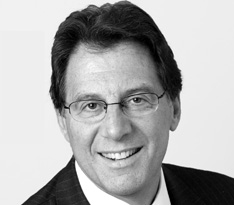
Last May, The Plank Center for Leadership in Public Relations and Heyman Associates published our Leadership Report Card. The results of our survey of more than 800 senior communicators were detailed in earlier blog posts here (Part 1, Part 2). Since then, I have had the opportunity to present our findings to IPR’s Board of Trustees and – in partnership with study author Dr. Bruce Berger and Ellen East, both instrumental in the work of The Plank Center – to those attending the PRSA’s annual conference.
The survey identified a number of areas (job performance, trust, job satisfaction and culture) in which top leaders rated their organizations more highly than did leaders a level or two below them in the hierarchy. Rather than merely pointing out this disconnect, our objective was to alert top leaders to potential blind spots that obscured meaningful opportunities to improve their organizations.
Actually acting on findings of this sort is the difficult part. As the saying goes, “the first step is always the hardest.” It is easy to read survey results and accept them in some general sense, but it is far more difficult even to entertain the possibility that the results might apply to the reader’s own organization. And the Leadership Report Card bears that out: top leaders tended to give their own organizations higher ratings than did others within the leadership ranks.
Something more than run-of-the-mill self-assessment bias could be at work here, and an interesting body of scholarship explores one possibility: the unique personal obstacles a top leader faces in evaluating his or her own organization. Those positive personality traits that help leaders in their rise to the top – optimism, self-confidence, a sense of mission – can actually hinder efforts at honest self-evaluation once they have gotten there. From a research standpoint, this is an area of particular interest to The Plank Center and to Heyman Associates: for over a decade, in close collaboration, we have been conducting research into the nature of leadership intangibles.
By exploring “self-awareness” and “mindfulness” – and even related concepts like “authenticity” and “servant leadership” – the scholarship describes a set of intangible skills that top leaders must cultivate before they can identify and embrace those changes in approach that will benefit their organizations. [1] Perhaps the most well-known thought leader in this area is Bill George, who has spent the past decade teaching leadership skills at Harvard Business School. In books that are already classics in the field – including Authentic Leadership and True North – George chronicles the successes of leaders who committed themselves to developing self-awareness, even taking a hard look at his own tendencies during his tenure as a chief executive:
I have always been open to critical feedback, but also quite sensitive to it. For years, I felt I had to be perfect, or at least appear that I was on top of everything. I tried to hide my weaknesses from others, fearing they would reject me if they knew who I really was. Eventually, I realized that they could see my weaknesses more clearly than I could. In attempting to cover things up, I was only fooling myself. [2]
Scholars doing empirical work in this area point to the benefits of cultivating that sort of introspection:
Self-awareness . . . is particularly important because demonstrating that one is aware of one’s strengths and weaknesses helps one to be true to oneself and is critical to being authentic. In addition, developing self-awareness alludes to a deeper process of discovering who one is, that is, learning one’s self-concept and self-views, how past events shape current perceptions and behaviors, and how one tends to make meaning of personal experiences. [3]
Even if we accept that self-awareness is a worthwhile trait to cultivate, the question remains: “How do we cultivate it?” George and others point to a variety of strategies, including meditation, small-group discussion, mindfulness-based interventions or executive coaching, internal surveys of staff members, or some combination of those approaches.
Different leaders would no doubt benefit from different approaches but, whatever the method, it can be extraordinarily challenging and even unpleasant work that requires a high degree of commitment – and also courage: “This is an inward journey of noteworthy distance suggesting a relatively complicated psychological process.” [4]
From my own perspective as someone who advises top senior management on assembling their leadership teams, I get to see the benefits of self-awareness firsthand. One very effective way to address workplace culture, employee engagement, or any of the other issues explored in our Leadership Report Card, is to hire people who exhibit traits that complement the strengths already present on the leadership team. Perhaps a company could benefit from someone with a knack for employee communications during a period of organizational change. Maybe it needs someone more skilled in developing junior staff. Or increased diversity in terms of viewpoints or backgrounds might be in order.
To admit any of those things requires honest self-assessment, and just asking the questions takes a great deal of inner strength. But it’s worth doing. Whenever I have frank discussions with a client at the beginning of a search about what is truly lacking in an organization, it shows a degree of self-awareness that gives me confidence that the ultimate hiring decision will benefit the organization over the long term.
When a survey identifies a significant trend in the field, it is important to ask what those findings might mean at the level of the individual organization. The bell curve shows us that some organizations certainly will perform at an above average level. But the opposite will also be true – we are not in Lake Wobegon. It costs little or nothing to at least ask the question: “Do these findings apply to my own organization?” If the answer is “yes,” there is a silver lining in that: an opportunity to make the organization stronger has just presented itself.
 William Heyman is President & CEO of Heyman Associates and a Trustee for the Institute for Public Relations.
William Heyman is President & CEO of Heyman Associates and a Trustee for the Institute for Public Relations.
References
[1] Marek Vich. “The Emerging Role of Mindfulness Research in the Workplace and its Challenges.” Central European Business Review, 4, no. 3 (Fall 2015) 35–47.
[2] William W. George and Peter Sims, Authentic Leadership: Rediscovering the Secrets to Creating Lasting Value (San Francisco: Jossey-Bass, 2003), p. 15.
[3] Fred Walumbwa, et al., “Authentic Leadership: Development and Validation of a Theory-Based Measure,” Journal of Management, 34, no. 1, (Spring 2008) 103.
[4] Jane Turner and Sharon Mavin, “Becoming More Self Aware – A Journey of Authentic Leader Development,” in 15th International Conference on Human Resource Development Research and Practice across Europe, Edinburgh, Scotland, June 4–6, 2014, p. 8.




thank you Bill for this thoughtful work. I think sometimes the hardest thing to do when you run an organization is to have people give you direct and honest feedback that is constructive and helpful. Creating a culture that values this kind of open and honest exchange takes constant effort and as you point out, a lot of self confidence.
Self-Awareness is one of life’s most difficult challenges but it’s often true that the greatest obstacles yield the best opportunities for learning. Thanks Bill for the survey, your insights and your guidance.